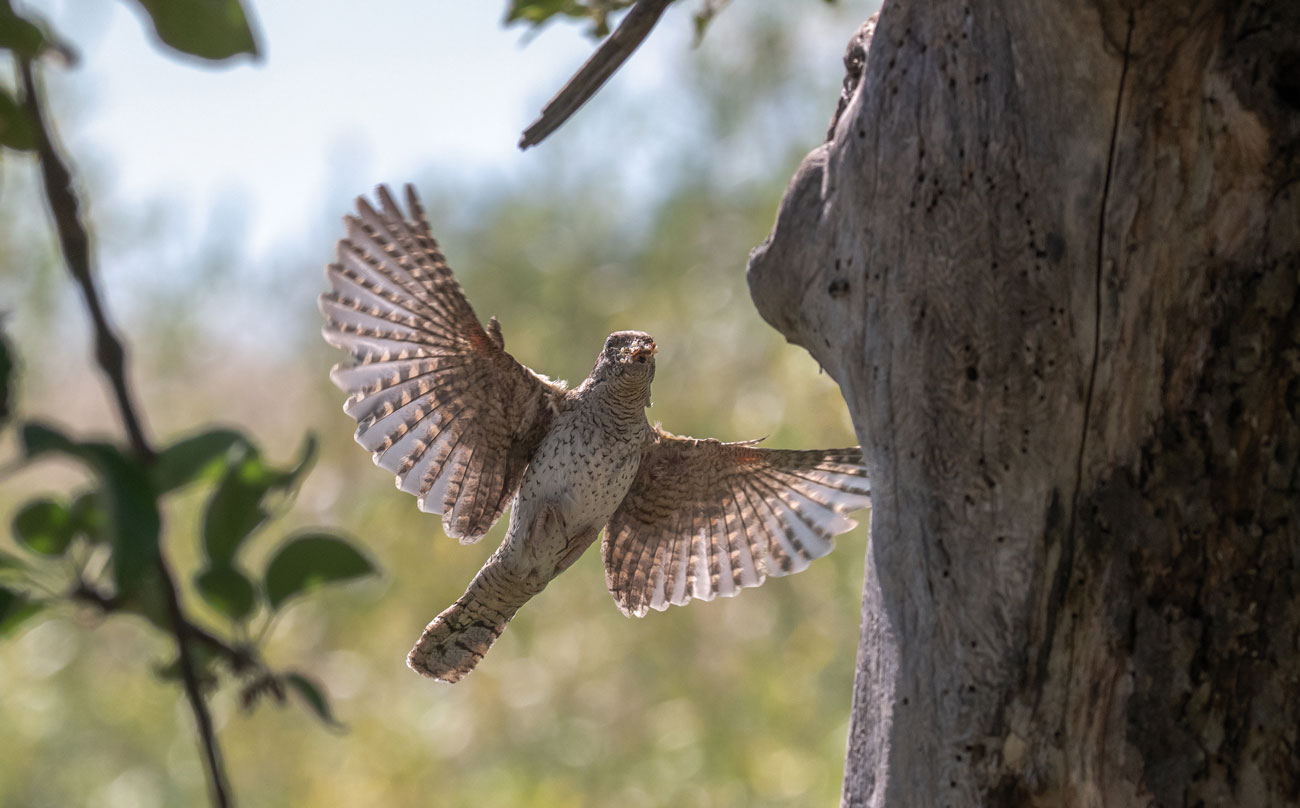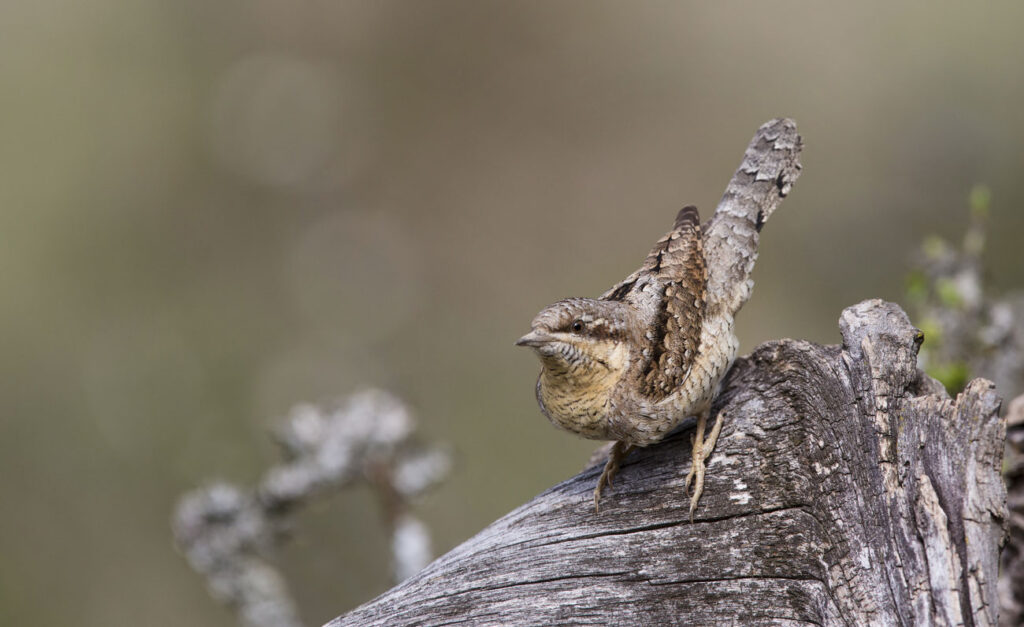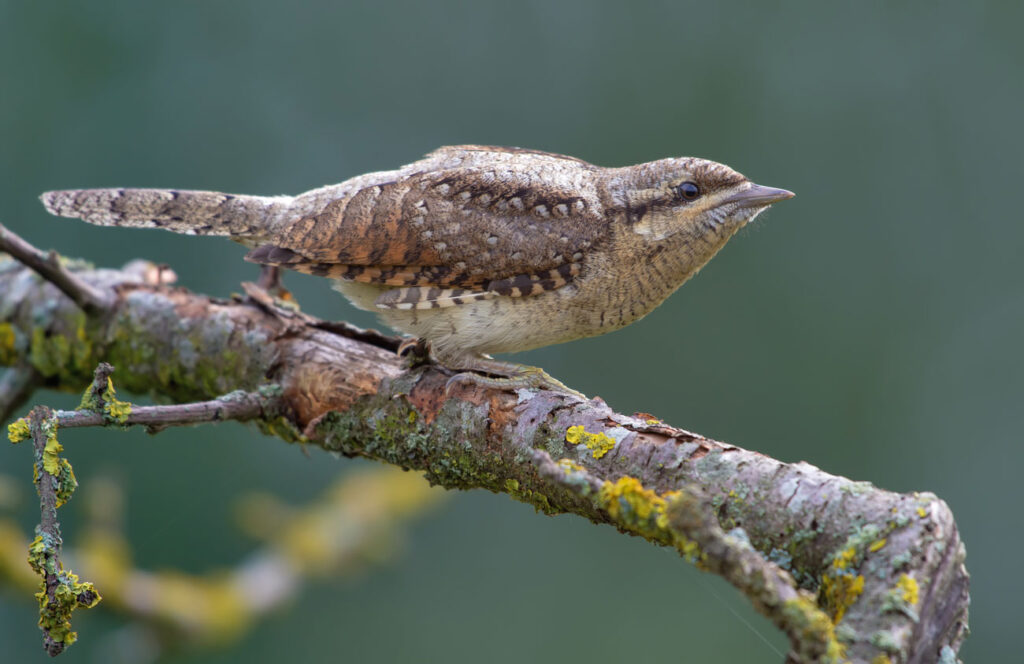
A Eurasian Wryneck (Jynx torquilla) in full flight
A surprise early Christmas present came my way back on one of those still and lazy September days we fondly remember now the nights have drawn in.
The sun blazed brilliantly in an ever-blue sky and fallen fruit from the hedgerow attracted the fast fading survivors of summer’s butterflies and buzzers.
But a slight chill in the air was evidence of an imminent change in the seasons. Rain and autumn winds were forecast for later in the week. In the birding world, things were on the move. It was time for a little walk.
Up in the Surrey hills above Cranleigh I did my usual circuit. My attention was soon taken by a milling flock of migrating House Martins who were busily feeding on insects above the forest of Scots Pine before moving on south.
They would disappear for about half a minute and then emerge again above the tree line. Or were those new arrivals? This happened a few times so I decided to try and do my best to count them in case I was witnessing a massive movement worth noting. I had got to about 140 when I spotted a few small birds flitting around in a dwarf Rowan 20 metres from the path.
A quick check through my binoculars revealed a stunning spectacle. The long-tailed largest bird was one I have been looking and hoping for each autumn as it migrates towards tropical Africa to escape the imminent Scandinavian snow.
It was a Wryneck, a rare and skulking visitor to Surrey that is by no means found annually. Anyone lucky enough to discover one is often the only observer and the bird is usually gone by the next day.

A Wryneck is perfectly camouflaged on the tree bark
The species, camouflaged like a piece of bark, also has a habit of turning up in the garden of someone who only finds out later what it is. So to say I was gobsmacked would be about right.
Here was one completely out in the open and posing nearby without a care in the world. And bizarrely there were three other birds decorating that little tree too. The welcome party among the few red berries remaining were a Stonechat, a Dartford Warbler, and a Chiffchaff.
But I kept my eyes on the bird I had been keen to find in Cranleigh every autumn, um, only for the last 38 years.
This small member of the woodpecker family showed typical cryptic plumage. Fine black-barred underparts, a pale yellowish throat, intricate brown and black barring on the wings, grey on top of the head and back, flecked with dark markings, and black stripes down the side of the head and on the back.
It just stared at me as if to say: ‘Go on then mate, enjoy the view. You must have walked past this tree thousands of times. Well today’s your lucky day. You deserve it’ – which I thought I did because I had always told myself I’d surely see one locally if I kept trying. Birding has fostered a ‘never give up’ spirit in me and it has paid off many times over the years.
This fella gave splendid views for about three minutes before deciding I’d had my money’s worth. It then dived down into the bracken and heather to resume seeking out ants and other insects with its long, sticky tongue. I waited a fruitless hour before having to leave.
People hang around for many hours to get a glimpse of a shy Wryneck briefly popping up like a sentry on vegetation to see what is about. But it failed to show for me again. I put the news out and was pleased to hear it showed again that afternoon to a few thankful souls who quickly got to the site.

The Wryneck with its very distinctive markings
Next day I was there just after dawn, ever hopeful. But as is often the case with Wrynecks, it had gone.
A strange snake-like feature of this species is its ability to twist its neck round to point its bill over its back. It is this behaviour that apparently gives the Wryneck its name, after an old English word ‘wrigian’ – to turn – which became ‘writhe’ and ‘wry’.
The old days are what I think of with Wryneck. Sadly, they are birds from our history books. It is hard to believe now but they were common breeders in rural Surrey toward the end of the 19th century and bred up to 1930 at Rumbeams Farm, Ewhurst. But they became a rarity after World War II.
The very last pair around here bred in an apple tree from 1947-49 at Briarfield, The Common, Cranleigh. Until this year there were only three further local records.
One adult was trapped and ringed at Ewhurst nearly 50 years ago to the day that I saw mine. Another was reported on a greenhouse roof in Peregrine Close, Cranleigh, in September 1986. And a Spring bird graced a lucky resident’s patio in Horsham Road, Ewhurst, on 5 May 2011.
Like many species now, the Wryneck is of high conservation concern and its range has been diminishing in all west European countries. It could look behind it but, like those that once enjoyed its early arrival every summer, never saw what was coming.
It breeds in Britain no more. So I count myself fortunate to have stumbled on one of the last that did, calling its ‘kee-kee-kee-kee-kee-kee’ song outside its nesting hole in the Scottish Highlands.
That was way back in the days when I first began my quest to, someday, find one in my own village.
Twitter – @Crane_Spotter
Click here to see all of Robin Stride’s previous Crane Spotters.











